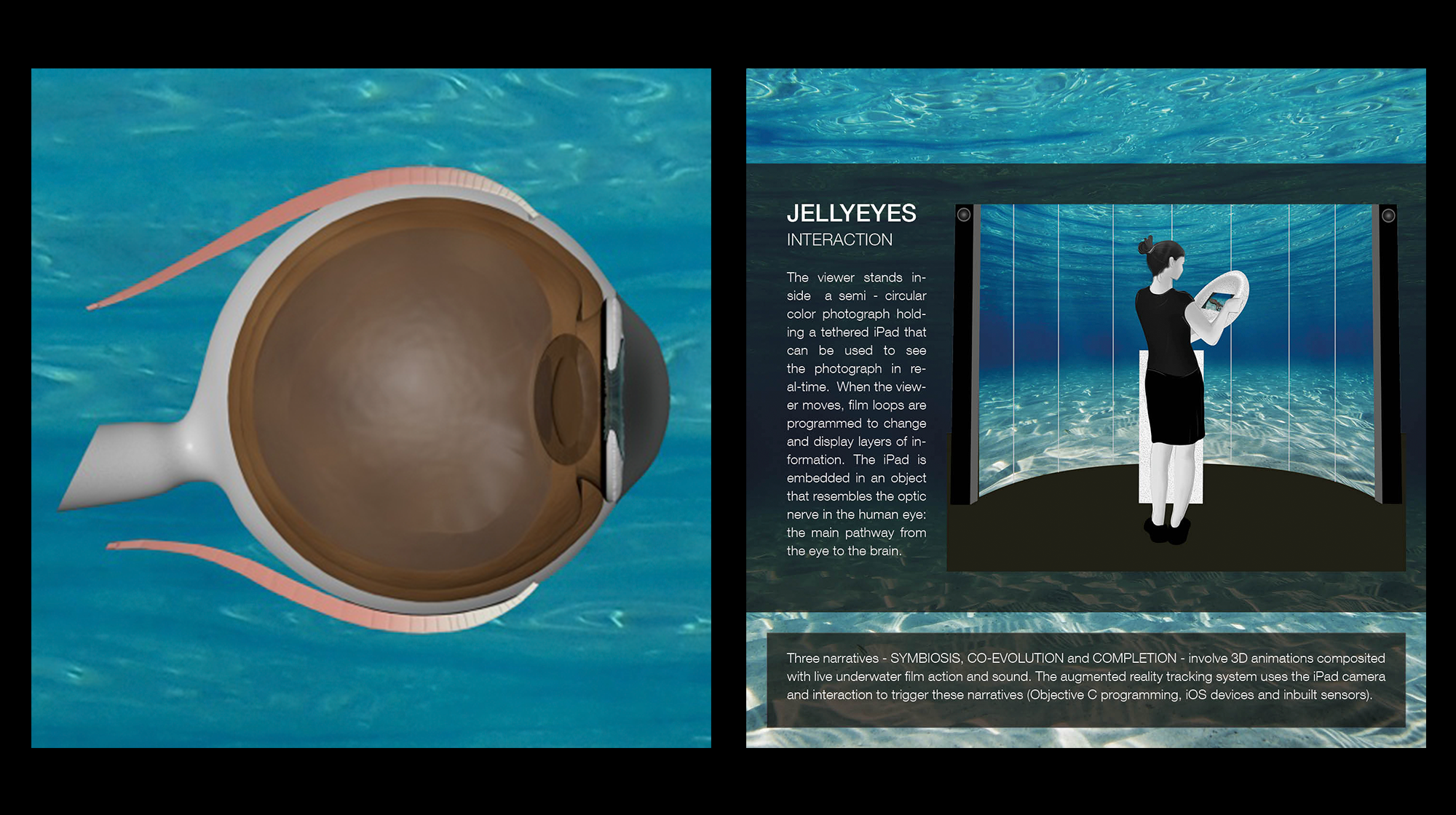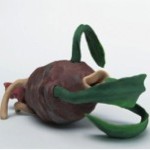ABOUT EVOLUTION I

TYPE Exhibition + Art & Science Forum
DATE 29.10.2015 – 14.01.2016
LOCATION Small Aula Gallery & CSA Gallery, Collegium Biologicum, UAM Poznań
Artists
Jill Scott, Suzanne Anker, Joanna Hoffmann, Reiner Maria Matysik, Katarzyna Hoffmann
CAPTURE THE FUTURE(S): EVOLUTION I
 Art & Science Node organized Capture the Future(s): Evolution I event along with the Club for Science & Art in Poznań (PL). The exhibition and film series ran from October 29, 2015 until January 14, 2016 at the Small Aula Gallery & Club for Science & Art Gallery in the Collegium Biologicum of Adam Mickiewicz University (UAM) in Poznań. Attendees had the opportunity to engage with scientific debates and discussions at the opening and closing, an ongoing art & science film program, and an exhibition exploring various art & science themes.
Art & Science Node organized Capture the Future(s): Evolution I event along with the Club for Science & Art in Poznań (PL). The exhibition and film series ran from October 29, 2015 until January 14, 2016 at the Small Aula Gallery & Club for Science & Art Gallery in the Collegium Biologicum of Adam Mickiewicz University (UAM) in Poznań. Attendees had the opportunity to engage with scientific debates and discussions at the opening and closing, an ongoing art & science film program, and an exhibition exploring various art & science themes.
CAPTURE THE FUTURE(S): EVOLUTION I – EXHIBITION
ARTWORK PRESENTED AT THE EXHIBITION

Jill Scott | Jellyeyes: Evolution and Vision
augmented reality
An interpretive augmented reality (AR) artwork, made in collaboration with Dr Stephan Neuhauss: Neurobiology, University of Zürich, Dr. Lisa-Ann Girshwin, Australian Marine Stinger Advisory Services and Nikolas Völzow, Programmer at ZKM Karlsruhe and the AIL Production Studio. 24 eyes of the poisonous Australian box jellyfish and the large round eyes of one of our favorite foods, squid or calamari, this piece draws from a combination of scientific facts. The main aim of this work is to raise awareness about evolution and encourage more reflection by the public, through interactions with metaphorical narratives based on symbiosis, co-evolution, and completion.
Jill Scott (Dr.) is Professor for Art and Science Research at the Institute of Cultural Studies in the Arts, Zurich University of the Arts. She is also founder of the Artists-in-Labs Program, and Vice Director of the Z-Node PhD program on art and science at the University of Plymouth, UK. Her artwork spans 38 years of media art production about the human body, behavior, and body politics, and recently on neuroscience, ecology, and sensory perception. Recent artworks have involved the construction of interactive media and electronic sculptures based on studies she has conducted during residencies in neuroscience labs at the University of Zurich. Her publications include: Neuromedia: Art and Science Research with Esther Stoeckli (2012); Transdiscourse 1: Mediated Environments (2011); and Artists-in-labs: Networking in the Margins (2011).
For this project, Jill collaborated with Dr. Stephan Neuhauss: Neurobiology, University of Zurich, Dr. Lisa-Ann Girshwin, Australian Marine Stinger Advisory Services and Nikolas Völzow, Programmer at ZKM Karlsruhe and the AIL Production Studio.

Suzanne Anker | Vanitas In a Petri Dish
Petri dishes, named after the German bacteriologist Julius Richard Petri (1852–1921), are the round, shallow glass vessels used variously in laboratories to grow bacteria, germinate plants, and view liquid samples under low-powered microscopes. For these photographs Suzanne Anker, whose multi-media works bridge the arts and sciences, fitted out Petri dishes with dense and seductive mini landscapes largely comprised of naturally occurring, but sometimes including man-made materials. Titled Vanitas and named after the genre of XVII century Dutch still life paintings that juxtaposed symbols of life and decay, this series exploits the flatness of photography to survey improbably seductive and miniature environments that Anker carefully created. The resulting images suggest natural cycles of life and death, speak to the manipulation of nature and the consequences of that, and remind us, too, that the term ‘petri dish’ is also used to describe hospitable arenas – like the science and the arts – where inquiry and new ideas can develop.
Suzanne Anker is a pioneer in Bio Art, working at the intersection of art and the biological sciences. Chairing SVA’s Fine Arts Department in NYC since 2005, Ms. Anker continues to interweave traditional and experimental media in her department’s new digital initiative and the SVA Bio Art Laboratory. She works in a variety of mediums ranging from digital sculpture and installation to large-scale photography to plants grown by LED lights. Her work has been shown both nationally and internationally, including at the JP Getty Museum, the Pera Museum in Istanbul, and the International Biennial of Contemporary Art of Cartagena de Indias, Colombia. Her book The Molecular Gaze: Art in the Genetic Age was co-authored with the late sociologist Dorothy Nelkin, published in 2004.

Joanna Hoffmann | MicroR-evolution: Intrinsic Connections
How is the evolution of space-time reflected in biological structures and their interactions? Which universal processes and geometries are hidden in “microscapes?” What perceptual tools do we have to apprehend them? In this series, an RNA molecule became a key for artistic investigations about structural emergence, alterability, and affinity in nature. The series involves short 3D stereoscopic animations, and was developed in cooperation with Prof. Janusz Bujnicki, Genesilico Lab, ICMB Warsaw and KNOW Polish National Leading RNA Research Institute in Poznan.
Joanna Hoffmann-Dietrich (Dr hab) is Professor of the University of Arts in Poznan, where she leads the Studio for Transdisciplinary Projects & Research AE/UAP. She is also co-founder and Chair of the Art & Science Node in Berlin. Her artistic works have been widely presented in venues such as: the Center for Contemporary Arts in Warsaw; the Science Museum/DANA Centre and MOCA Museum of Contemporary Art in London; the Transmediale Festival and European Patent Office in Berlin; the WRO Media Art Biennale in Wroclaw; MUSE Centre of Photography and the Moving Image in New York; the BioQuant Centre in Heidelberg, DE; and the Hiroshima City Museum, Japan.
She has been an artist-in-residence at: Eilslabs/DKFZ/Heidelberg University; Academy of Film and Television Potsdam-Babelsberg; CEMA Centre for Electronic Media Art/Srishti College & NCBS National Centre of Biological Science, Bangalore, India; KHOJ & ICGEB International Centre for Genetic Engineering and Biotechnology New Delhi, India, and is a Reiterated Fellow of the Polish Minister of Culture.

Reiner Maria Matysik | Prototypes for Organisms
Matysik’s work became well known particularly through his models of post-evolutionary organisms, which are situated between his vision of active evolution (evolution controlled by humans) and the future forms of living biological sculpture. The artist’s motivation in creating these prototypes of future organisms stems from his conviction that the rapid advances in modern molecular biology and genetic engineering will have dramatic consequences for the process of biological evolution, as well as for art, that can hardly be assessed at present.
Reiner Maria Matysik lives in Berlin, studied fine arts at the Hochschule für Bildende Künste Braunschweig, Kunstakademie Düsseldorf, and at the Ateliers Arnhem in the Netherlands. In 2004, he directed the artistic development project Institute of Biological Sculpture at the HBK Braunschweig, and worked as an Assistant Professor at the Institute of Visual Arts, Faculty of Architecture, Technical University Braunschweig.
He has exhibited his artworks in institutions such as the Berlin Medical History Museum of the Charité, Centre Pasquart, Biel, Switzerland; Neue Gesellschaft für Bildende Kunst, Berlin; Projektraum deutscher Künstlerbund, Laboratoria Moskau; Museum Koenig, Bonn; Georg Kolbe Museum and Künstlerhaus Bethanien, Berlin; Staatliche Kunsthalle Baden-Baden; Fondación Cesar Manrique, Lanzarote; and Martin-Gropius-Bau, Berlin.

Katarzyna Hoffmann | Reconstruction, 2015
Inspiration for this project was humanity’s constant need to discover and explore the world through impressive and surprising scientific discoveries, which includes at least a dozen newly discovered animal species every year. It returns to old biological drawings, and the internal physiques of bugs, fishes, and arachnids and confronts them with contemporary biological pictures created using advanced technologies, creating non-existent, hybrid, new species. The works were a kind of experiment based upon creation of species which could have been another stage of evolution, perfectly adjusted to constantly changing environmental conditions caused by human activity.
Pictures are created to describe nature, using digital techniques that transcribe its primary structure to a digital code. A plant registered by a 3D scanner, which documents its structure, imperceptible to the human eye. The fragmentation of the plant and removal of its “shell” or “skin” allowed people to observe its internal side. In addition it showed the technique’s inferiority in comparison to the nature’s perfection.
Katarzyna Hoffmann (Tyburska), graduated from the University of Arts in Poznan with an MA in Art Education and Curatorial Studies (2015), as well as an MA in Photography (2016). She is an artist, photographer, curator, and was laureate of the Show Off competition of the Cracow Photography Month 2016, as well as of the competition Antropocen: Progress & Catastrophy as part of the FLOW Festival World Water Day in Poznan 2015.
Capture the Future(s) Evolution I Film Program
A Capture the Future(s) Evolution I film program ran alongside the Capture the Future(s) Evolution I exhibition, featuring the following short films dealing with art/science topics:
 Flesh Computer | Ethan Shaftel (USA) 2013, 13:16
Flesh Computer | Ethan Shaftel (USA) 2013, 13:16
A short film from writer/director Ethan Shaftel that explores the nature of consciousness by jumping between the perspectives of an eclectic group of characters including a young girl, a vicious bully, and a tiny housefly. Noted philosopher David Chalmers appears in the film and raises some fundamental questions regarding consciousness in counterpoint to the action.
Award-winning short sci-fi film, Science Festival NYC, 2014

Macrostructure | Eric Schockmel (UK) 2013, 04:58
Macrostructure is the first episode in a micro-series entitled “What If You Created Artificial Life And It Started Worshipping You,” a 3D animated journey through a world inhabited by synthetic life forms and the self-aware machines who manufacture, control, and recycle them.
Presented at BIO·FICTION Science Art & Film Festival, Vienna 2014

A New Way in Evolution | Uwe Sleytr (AT) 2014, 03:41
An experimental piece that explores an evolution sped up by synthetic biology, it tries to imagine the future of human development. Prof. Uwe Sleytr is head of the Center for Nanobiotechnology and the associated Ludwig Boltzmann Institute for Molecular Nanotechnology, member of the Austrian Academy of Sciences, president of the Erwin Schrödinger Society for Nanosciences, and a co-inventor of NANO-S’ S-layer platform.
Presented at BIO·FICTION Science Art & Film Festival, Vienna 2014

Quasi-Objects / Cinematic Environment #8 | Lorenzo Oggiano (IT) 2012, 04:32
3D-generated videos and prints, a practice of “organic re-design” that aims to contribute to the debate of the postnatural ecosystem: Life as something that is not exclusively located within a body, but rather immanent in any complex system, human or non-human.
Presented at BIO·FICTION Science Art & Film Festival, Vienna 2014

Pandas | Matúš Vizár (CZ, SL) 2013, 12min
“It is not the strongest of the species that survives, nor the most intelligent that survives. It is the one that is the most adaptable to change.” Charles Darwin
Award-winning film, Cinefondation Festival de Cannes, 2013
Capture the Future(s) Evolution I – scientific talks and panel
During the Capture the Future(s) Evolution I opening events we organized and hosted a scientific discussion panel, featuring the following participants:
Prof. Władysław Polcyn | Department of Plant Physiology, Faculty of Biology, UAM
Self-organization and the origin of life
Prof. Jacek Radwan | Evolutionary Biology Group, Faculty of Biology UAM
Mutations: The yin and yang of evolution
Prof. Borys Wróbel | Evolutionary Systems Laboratory, Institute of Molecular Biology and Biotechnology
Life: In art, artificial, synthetic
Prof. Krzysztof Łastowski | Department of Logic and Cognitive Science, Institute of Psychology, UAM
Modern Synthesis vs Extended Synthesis: Towards a New Paradigm Structure of Evolutionary Biology
Discussion moderators:
Prof. Zofia Szweykowska-Kulińska | Institute of Molecular Biology and Biotechnology, FB/UAM
Prof. Artur Jarmołowski | Institute of Molecular Biology and Biotechnology, FB/UAM
Prof. Joanna Hoffmann-Dietrich | University of Arts, Poznan







